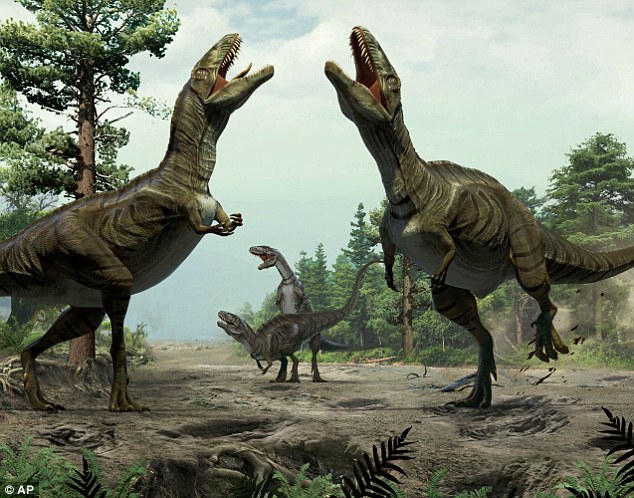The dinosaurs ruled the planet for 135 million years before an enormous asteroid impact is thought to have wiped them out.
According to theories proposed in the 1990s, vast clouds of sulphuric acid thrown up by the impact are believed to have filled the atmosphere, creating poisonous acidic rain and cooling the planet.
But the theory fails to account for how some species survived this catastrophe. Now scientists claim to have worked out why – it was soot that was actually responsible for the demise of the dinosaurs.
A new study suggests the mass extinction 66 million years ago was caused by vast amounts of soot that were thrown into the atmosphere by the asteroid impact.
Researchers, examined sediments from the boundary of the Cretaceous and Paleogene periods – approximately 66 million years ago.
Focussing on hydrocarbons in the samples, the authors suggest that the asteroid impact into an oil rich area launched a cloud of smoke into the atmosphere, which spread globally.
The results from the hydrocarbons suggest that a soot ejection of approximately 1,500 teragrams would have been great enough to cause the mass extinction of dinosaurs, while allowing animals such as crocodiles to survive.
In their paper, the researchers write: ‘The soot aerosols caused sufficiently colder climates at mid-high latitudes and drought with milder cooling at low latitudes on land.
‘The rapid climate change induced terrestrial extinctions followed by marine extinctions over several years.’
Previous studies have suggested the formation of condensed sulphuric acid aerosols in the stratosphere led to a reduction in photosynthesis and near freezing conditions by reflecting sunlight.
However, this theory did not explain why the dinosaurs died, but other animals, such as crocodiles, survived.
Additionally, it has since been shown that condensed sulphuric acid gases cannot form and persist over long periods after the initial asteroid impact.
The new theory that soot was responsible for the demise of the dinosaurs supports evidence that dinosaurs died but other animals survived, due to the mild cooling at lower latitudes.
Source: Daily mail
N.H.Kh

